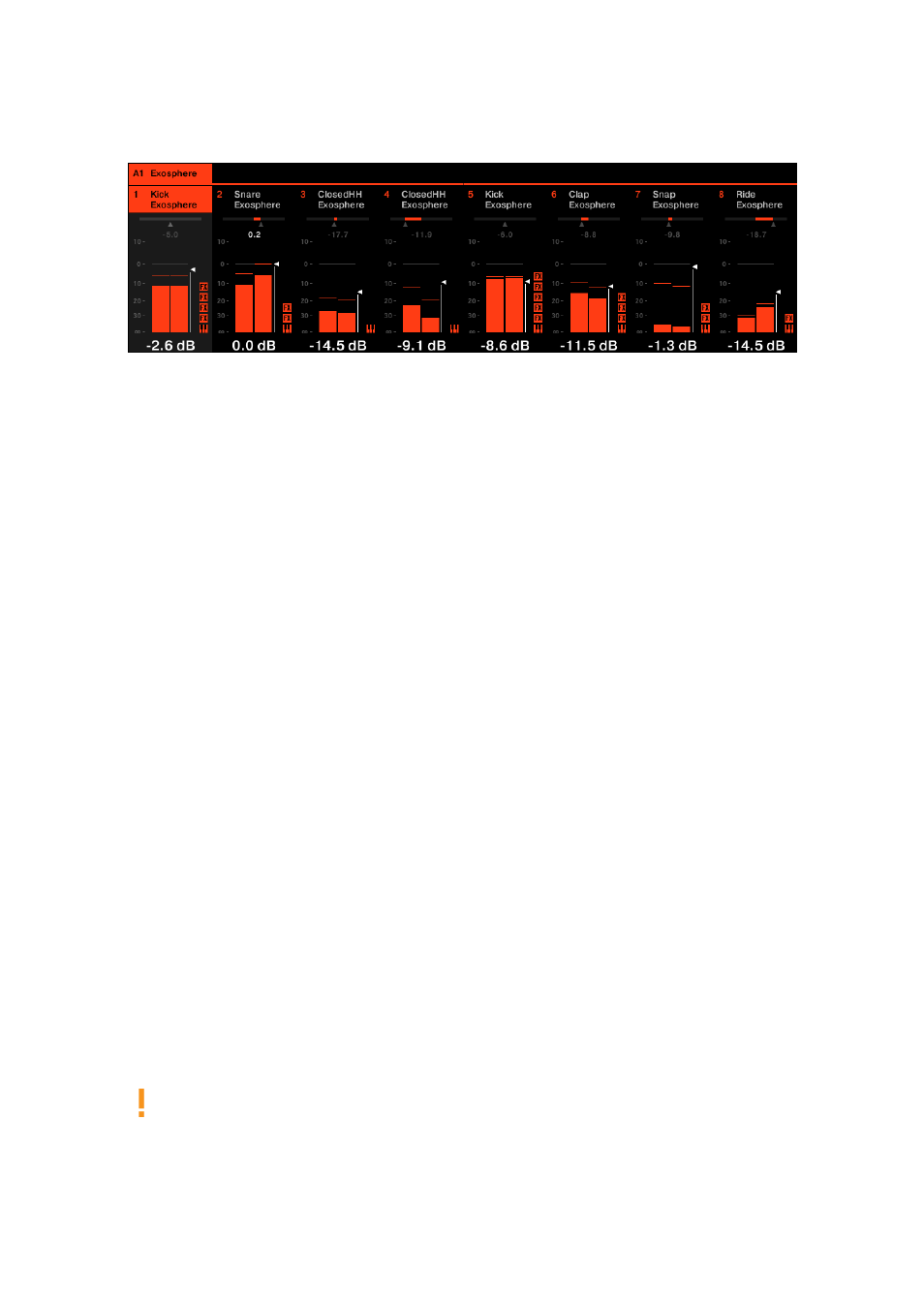Selecting multiple sounds or groups, For mor – Native Instruments MASCHINE+ Standalone Production and Performance Instrument User Manual
Page 73

The Mixer displaying the channel strips for Sounds in a Group
9.1.2. Similarities and Differences in Handling Sounds and Groups
Sounds and Groups are handled in very similar ways — see section
and
below for all details. Here is a list of the main differences between both:
• In each Group you always have a
fixed number of Sound slots
, namely 16. Some of these
Sound slots might be empty, and you can have gaps in your slots (i.e. some empty Sound slots
between other slots containing Sounds), depending on how you prefer to play your Sounds from
your pads. You cannot create Sound slots, but instead, you can load/unload Sounds to/from the
16 existing Sound slots in each Group.
• In your Project, you can have
any number of Groups
. You can create, fill up, and delete Groups
as you see fit. If you delete a Group, all following Groups are shifted up in the Group List to fill
the gap. If you use more than eight Groups, another Group bank is automatically created.
9.1.3. Selecting Multiple Sounds or Groups
In MASCHINE
you can select multiple Sounds or multiple Groups at once
. This notably allows
you to change a parameter value for all selected Sounds/Groups at a time.
To achieve this, MASCHINE+ distinguishes the “focus” from the “selection”:
• The
focus
determines what is displayed. For example, by selecting a Sound you are putting the
focus on that Sound, and all the parameters (Channel properties, Plug-ins, etc.) for the selected
item are displayed. For the focus, the following rule applies:
At each level (Sound and Group)
there is always one object, and only one, in focus.
The focused object is highlighted.
• The
selection
, determines what will be affected by your actions (for example, adjusting a
parameter). For example, the focused Sound (for instance, the one you selected) is implicitly
selected, nothing special here: This just means that the Sound whose parameters are currently
displayed will be indeed affected by the changes you do on these parameters. But you can
select additional objects on top of the focused object, thereby extending your selection.
Selected objects are highlighted in the displays.
More precisely, if a Group or a Sound is currently focused, you can additionally select other Groups
or Sounds, respectively. These will be also affected by your edits on the focused Group or Sound.
You cannot select Sounds and Groups simultaneously.
Each Group remembers its own Sound selection and focus.
When setting the focus to a new Sound or Group, the following rules apply:
MANAGING SOUNDS, GROUPS, AND YOUR PROJECT
66
